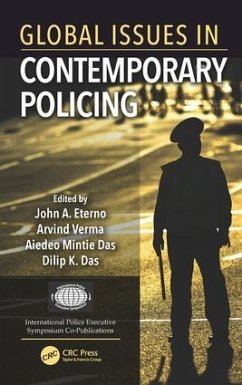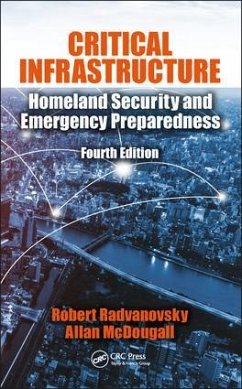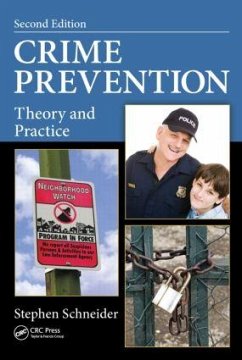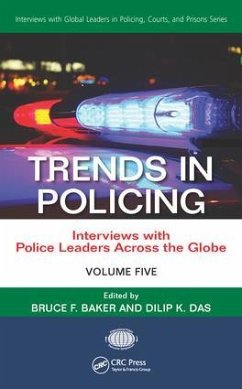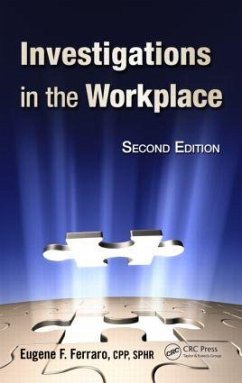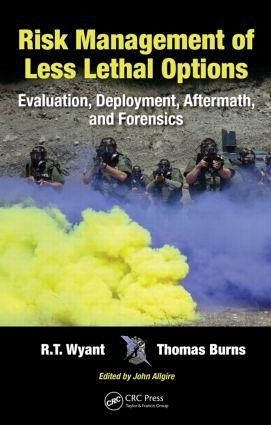
Risk Management of Less Lethal Options
Evaluation, Deployment, Aftermath, and Forensics
Versandkostenfrei!
Versandfertig in über 4 Wochen
128,99 €
inkl. MwSt.
Weitere Ausgaben:

PAYBACK Punkte
64 °P sammeln!
Force used to quell out-of-control demonstrations or detain unruly individuals can result in litigation and bad press for law enforcement agencies. Injury or loss of life can best be avoided if agencies have accurate knowledge and proper training in less lethal options. Risk Management of Less Lethal Options: Evaluation, Deployment, Aftermath, and Forensics discusses how lessons learned from major disturbances have helped law enforcement professionals develop concepts and techniques that police departments can apply to increase successful outcomes, manage risk, and limit liability. The methods...
Force used to quell out-of-control demonstrations or detain unruly individuals can result in litigation and bad press for law enforcement agencies. Injury or loss of life can best be avoided if agencies have accurate knowledge and proper training in less lethal options. Risk Management of Less Lethal Options: Evaluation, Deployment, Aftermath, and Forensics discusses how lessons learned from major disturbances have helped law enforcement professionals develop concepts and techniques that police departments can apply to increase successful outcomes, manage risk, and limit liability. The methods presented in this book were developed over a decade of testing, training, evaluating, deploying, analyzing, and testifying related to the use of these tools. Topics include: * The evolution of the less lethal paradigm through the analysis of the outcomes of major incidents * Categories of less lethal options-including impact, chemical, electrical, and distraction * Riot-control agents (RCAs), which produce rapid sensory irritation or disabling physical effects that disappear within a short time * Less lethal impact munitions (LLIMs) that deliver blunt trauma, including the study of their capabilities and limitations * Important factors for developing a successful less lethal training program * Challenges caused by arrest-related death, in-custody death, and Excited Delirium Syndrome (ExDs) * The use and forensic analysis of conducted electrical weapons (CEWs)/Tasers * Effective post-event report writing, evidence collection, and court preparation Risk management of less lethal options requires a complex, multi-tiered approach. This volume provides law enforcement professionals with guidelines to manage risk from the street to the courtroom when utilizing less lethal options to subdue offenders. Praise for the Book: This is an incredible resource that is easy to read and extremely informative.-Dan Savage, Captain, Grand Rapids Michigan Police Department Overall, this is essential reading for all involved in law enforcement who use, authorize, or oversee less lethal policy, training and deployments. -Chief Constable (Retired) Ian Arundale, Association of Chief Police Officers, lead on policy and training relating to UK firearms, 'Less Lethal' and Conflict Management (2001-2013) What the authors have done in this comprehensive publication is present the operational and technical issues associated with selecting, deploying, and managing the consequence of less lethal options in a very readable way. ... It should be on the reading list of all who have an interest in gaining insight into law enforcement and less lethal options. -Colin Burrows, QPM, UK-based International Adviser on Critical Intervention Police officers, supervisors, incident commanders, managers, administrators and senior executives had all better have a solid grasp of the issues presented in this book.-Joel Johnston, Sergeant, Vancouver Police Department, Canada (Retired 2013); Principal, Defensive Tactics Institute (www.dtidefensivetactics.com)




